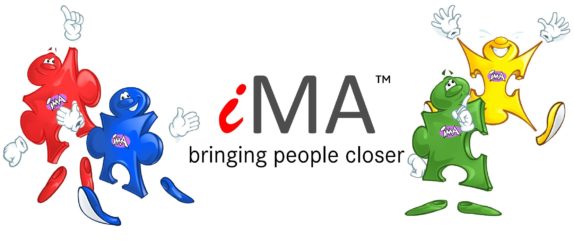Today’s guest blogger – Ashley Boroda
In the first of a series of guest blogs, Ashley Boroda – iMA Practitioner, talks about how to improve communication internally and externally in your organisation and how to utilise this in your recruitment process. Ashley delivers engaging training sessions across a wide range of sectors, improving sales, customer service and above all internal communication.
Ashley can be found here: LinkedIn or via his website here: Ashley Boroda
Ashley’s explanation of iMA is as follows:
“Imagine owning a business in which all of your people are in all the right places; doing the right jobs, working with the right customers / clients and working together in the right teams. Imagine the results, a happy, very motivated business, all sharing the company’s purpose, its visions and its values. Increased productivity, positivity and profitability along with a greater amount of trust, co-operation and better communication while negativity, stress and and office politics decrease.
Imagine everyone in your organisation singing from the same hymn sheet, but singing a different part of the same tune. As with a choir if everyone sang only soprano or only tenor, the sound would work for some while others would find the sound extremely difficult to listen to.
How much better would any business / organisation be, for all of its stake holders, if the right people are in the right places all of the time? A great number of people would sign up to the idea but many of them do not believe that it is possible. Most people think that to achieve this level of harmony is complicated, time consuming, expensive and difficult to comprehend. Here is the good news – the opposite is actually true which is why I have adopted iMA and use it in everything I do.
iMA is a skill set, easily learned, user-friendly, good fun and highly effective. Connectivity is a fundamental life skill and yet, up until now little or no training has been available to us. iMA is an exciting universal language, designed to maximise connectivity i.e. mutual liking, trust, understanding and respect.
In simple terms, everyone in the world speaks one of four iMA dialects, putting her / him on the same wavelength as 25% of the world’s population. The majority of people, many of whom are important to your success, are on a different wavelength than you so you need to understand how to communicate effectively with the other 75%.
The universal language of iMA is a simple way of observing and understanding the differences in people, then connecting with them on their wavelength.
It isn’t just people who possess one of the four iMA styles, jobs do too. Skill sets, strengths and confidence all reside within our particular communication style. Often there is a disconnect between those who apply for a job and the job itself. For example a candidate may initially be judged by their current job title, their experience, their CV or how good they are in an interview. That is because traditionally we use established and conventional thinking when recruiting from the outside-in rather than the inside-out.
Using iMA to improve your recruitment
Lets start with the job-spec, if we dig deep in to what is needed from this job, what regular outcomes are we looking for? And what type of skills are needed to achieve these outcomes? We can match the job to an iMA style / iMA colour. Each iMA style has been designated a colour, familiar to many from psychometric testing, iMA is neither psychometric or a test. As mentioned previously iMA is user-friendly, fun and highly effective. It only takes a couple of minutes to answer the iMA questionnaire at the end of which your iMA colour is revealed.
Matching the job to the iMA colour is essential for a happy outcome from your recruiting. In other words start with the details of the job, match it with an iMA colour and then begin the recruitment with that in mind. Use specific wording which appeals to the iMA colour you are focusing on makes the job sound very attractive to them and unattractive to the other three iMA colours, saving you time and reducing significantly the chances of recruiting the wrong person.
Before all of the above find out what iMA colour you are by following this link: Check Your iMA Profile
In my next blog I will explain once you have narrowed down the candidates from the initial applications and the best way of communicating / interviewing and indeed working with each iMA colour style.”
Thanks to Ashley for sharing this with us and feel free to contact him directly for additional information.




